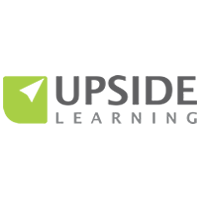Why Authentic Tasks Guarantee Applicable Learning
When the fire broke out, Tom was the only one in the office. A large part of the office was destroyed by the time the firefighters arrived. They found Tom standing near a bank of extinguishers looking a little confused.
Later, Tom would explain: “Yes, I attended the training on fire safety. I know all about the different types of fires and the right extinguisher for each.” Strangely, Tom had never once used a real extinguisher on a real fire.
Fortunately, the story is not real. What is real is the need for performing complete, authentic tasks during workplace learning. In real life, Tom could have perhaps limited the damage to a molten wastepaper basket had he, during his training, also used an extinguisher to put out a demo fire.
Real Or Simulated, Make Tasks Authentic
Yes, they must know that an oil fire is not the same as an electrical fire and that there are five types of fire extinguishers to deal with six classes of fire. What would make the training complete is the task of taking the right extinguisher off the wall, and then using the PASS technique correctly—pull, aim, squeeze and sweep.
That is an example of an authentic task. And that is also an example of holistic learning. Both of which combine to fire up learning engagement.
Yes, the usual academic questions (picking true or false, matching, filling in blanks, and so on) might still be useful. However, as Michael Allen notes in his Guide to e-Learning, “they do not create engaging learning activities. Because they look at isolated points of knowledge, they frequently provide little of the critical performance context.”
Instead, learning tasks must be authentic, “they must relate directly to the effective performance of tasks on the job. Authentic tasks are far more appealing than almost any rhetorical or academic task. They heighten our propensity to get involved. And that’s what we are after: involvement, engagement, and learning—the kind of learning that leads to success.”
Parts Make Not The Whole Task
Most workplace learning breaks the whole task into a set of separate learning objectives to ease the perceived cognitive load. Each easy-to-digest segment by itself does not make the whole authentic task. It would be more meaningful if the learners had the whole picture, especially when it comes to learning complex skills.
As Patti Shank notes in her book Practice and Feedback for Deeper Learning, “complex skills are not simply the sum of their parts.”
She adds: “In complex tasks, there are typically many organizational and coordination issues. When we teach the skills separately, these may not be obvious. People best transfer to the job what they learn from training when we train using whole-skill practice—not by breaking practice into constituent parts and only practicing the parts.”
Too much fragmentation discourages learning engagement. It might even make it difficult for the learner to put things in perspective and relate to the whole task. Therefore, complex learning requires awareness of the context of the whole authentic task for maximum engagement during the learning.
Ladder Learning Step By Step
Mirjam Neelen and Paul A. Kirschner [1] cite the example of learning to use a ladder on a windy day to wash a second-floor window to stress the importance of getting the whole picture first. When you focus on choosing the right ladder, you are likely to be unmindful of the tricky part of carrying a bucket up as the wind buffets you.
Instead, more authentically, the ultimate task of washing windows in adverse conditions could be broken down into a worked-out example, as Neelen and Kirschner have done, making it easier for the learner to relate to and engage with it. The learners need to come up with answers to questions like:
Which different ladders are available for which situations? What do you look for when using the ladder? What tends to be easily overlooked? Given the windy conditions, how do you recognize hazardous situations when inspecting and using the ladder, carrying up the water-filled bucket, and while washing the windows?
Whether we are learning to fight a fire or wash windows, authentic tasks with a holistic perspective make for the best learning.
Reference:
[1] Holistic Design vs. Atomistic Design: Building on #LTSF20 Participant Comments









